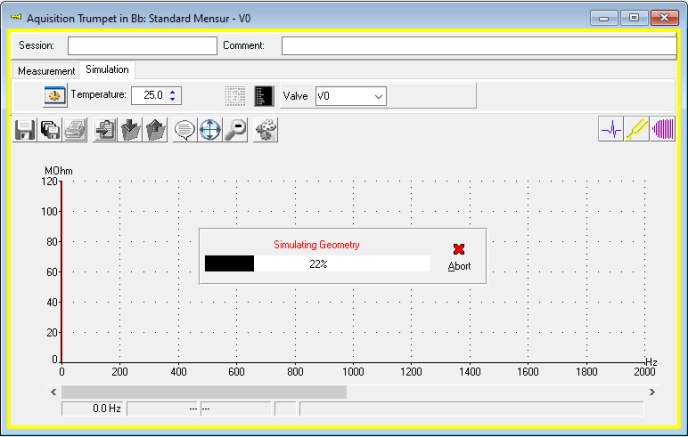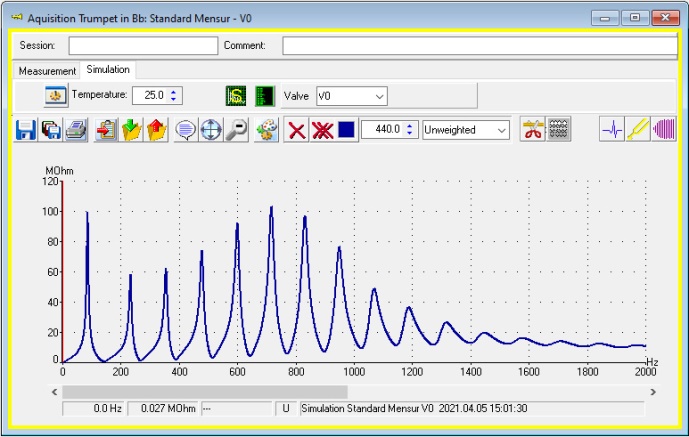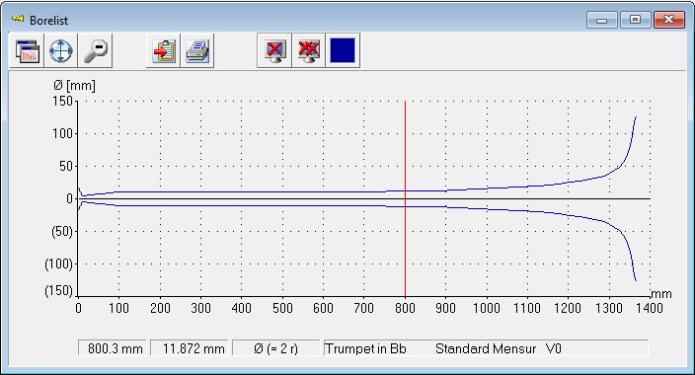In addition to all the diagnostic tools of the BASIC EDITION, the BIAS EXTENDED EDITION contains a physical simulation module that allows you to virtually play through changes to the bore and predict the changed properties of the instrument in terms of intonation and response without actually having to build it.
Enter the dimensions of the instrument as best you can in a so-called XY list. X=the distance from the mouthpiece rim and Y=the corresponding inner diameter. BIAS uses this list to simulate the instrument within 2-3 seconds. You can save the result, an “impedance curve”, just like a measurement in the database – either as a new virtual instrument or add it to the already existing and measured instrument. This allows you, for example, to give the instrument any number of other leadpipes or to modify the bore simply by changing the values of the XY list. Each changed bore list and simulation can be saved separately and recalled for comparison purposes.
Since it is easy to make a mistake when entering the dimensions, this window helps with a graphical representation of the data entered in the XY list. A numerical error is immediately noticeable.
The figure shows a trumpet in Bb, valve position V0, i.e. without any valve pressed.
On the left, an example of a simple XY bore list for a Bb trumpet including the mouthpiece. You can create this in Excel, a simple text program or directly in the bore editor of BIAS.
You can freely select the temperature (column 4) or specify a temperature gradient as shown in the figure below. The friction losses are also taken into account by a freely selectable damping at different points of the instrument (e.g. valve section) (column 3).
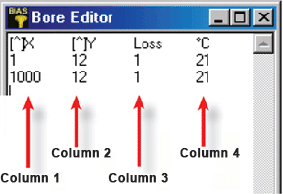
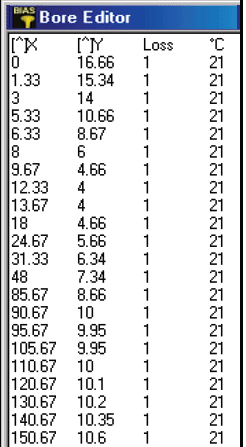
The BIAS Extended Edition is available either for brass or woodwind instruments with a corresponding database, or as a combination for brass and woodwind instruments.

